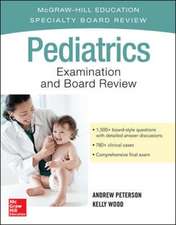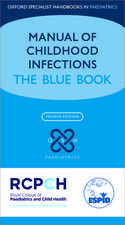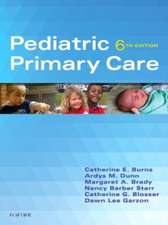Residential and Inpatient Treatment of Children and Adolescents
Editat de Stewart Gabel, Robert D. Lyman, S. Prentice-Dunnen Limba Engleză Paperback – 28 mai 2013
| Toate formatele și edițiile | Preț | Express |
|---|---|---|
| Paperback (1) | 1099.56 lei 6-8 săpt. | |
| Springer Us – 28 mai 2013 | 1099.56 lei 6-8 săpt. | |
| Hardback (1) | 1106.86 lei 6-8 săpt. | |
| Springer Us – 29 iun 1989 | 1106.86 lei 6-8 săpt. |
Preț: 1099.56 lei
Preț vechi: 1157.44 lei
-5% Nou
Puncte Express: 1649
Preț estimativ în valută:
210.41€ • 224.99$ • 175.43£
210.41€ • 224.99$ • 175.43£
Carte tipărită la comandă
Livrare economică 18 aprilie-02 mai
Preluare comenzi: 021 569.72.76
Specificații
ISBN-13: 9781489909299
ISBN-10: 148990929X
Pagini: 392
Ilustrații: XX, 370 p.
Dimensiuni: 155 x 235 x 21 mm
Greutate: 0.55 kg
Ediția:Softcover reprint of the original 1st ed. 1989
Editura: Springer Us
Colecția Springer
Locul publicării:New York, NY, United States
ISBN-10: 148990929X
Pagini: 392
Ilustrații: XX, 370 p.
Dimensiuni: 155 x 235 x 21 mm
Greutate: 0.55 kg
Ediția:Softcover reprint of the original 1st ed. 1989
Editura: Springer Us
Colecția Springer
Locul publicării:New York, NY, United States
Public țintă
ResearchDescriere
Residential and inpatient treatment of children and adolescents is a field that is still in the process of defining itself and of demonstrating its effectiveness. Because of the continuous nature of the field's development, it is especially important that a broad range of its theoretical orientations and therapeutic techniques be considered and critically appraised. Residential and inpatient treatment is unique in its potential for both positive and negative outcomes. No other interventions can bring about the major changes in all aspects of a child's environment that inpatient hospitalization or residential treatment can. These changes may result in rapid and significant improvements in a child's condition, or they may conceivably lead to additional maladaptive behavioral patterns or inappropriate emotional and cognitive responses. Therefore, the obligation to consider the entire range of treatment alterna tives and to empirically determine the effectiveness of specific interventions is particularly great. Residential and inpatient treatment is also an expensive and limited resource, and our wise utilization of it should be guided by a comprehensive understanding of its benefits and limitations.
Cuprins
I. Issues.- 1. Issues in Residential and Inpatient Treatment.- II. Models.- 2. A Psychoanalytic Model.- 3. The Behavioral Model.- 4. The Medical Inpatient Model.- 5. The Peer Culture Model.- 6. The Psychoeducational Model: Cumberland House after 25 Years.- 7. The Wilderness Challenge Model.- III. Methods.- 8. Outpatient Treatment as an Alternative to Residential Treatment or Inpatient Hospitalization.- 9. Pharmacotherapy.- 10. Individual and Group Psychotherapy.- 11. Partners in Care: Involving Parents in Children’s Residential Treatment.- 12. Educational Programming.- 13. Issues in the Evaluation of Residential and Inpatient Treatment Programs.- IV. Special Populations.- 14. Treatment of Schizophrenic Children and Adolescents.- 15. Mentally Retarded Children and Adolescents.- 16. Conduct-Disordered Children and Adolescents.- 17. Care Considerations for the Abused and Neglected Child.- 18. The Suicidal Child and Adolescent.- 19. Adolescent Alcohol and Substance Abuse.













